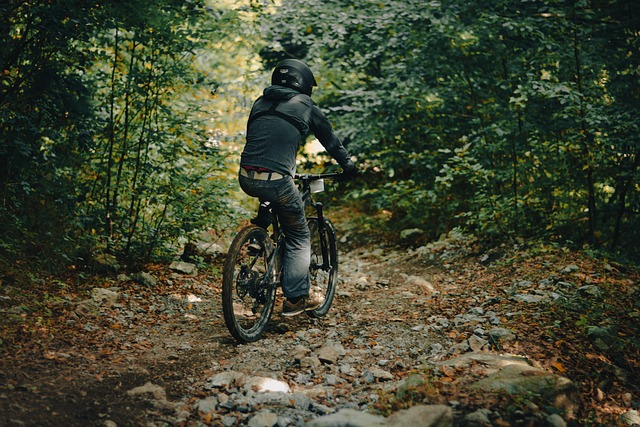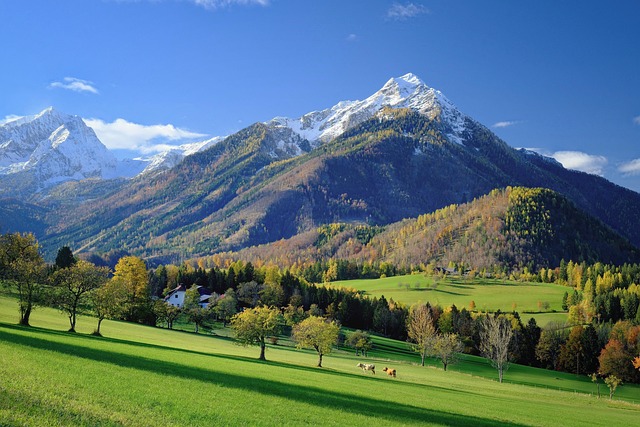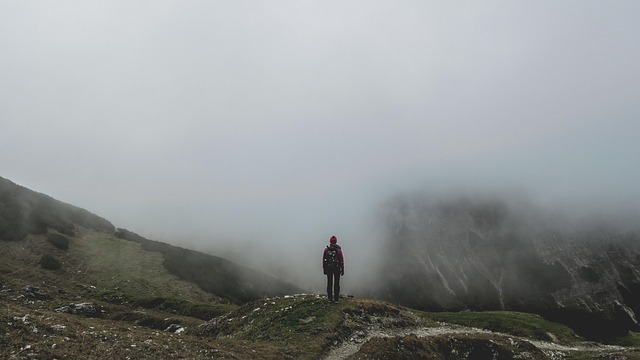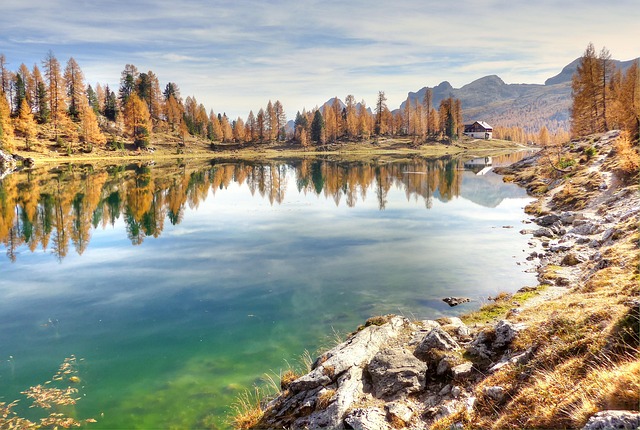
Category: Hiking in Lane County Oregon
Hiking in Lane County, Oregon: An In-Depth Exploration
Introduction
Nestled within the scenic Pacific Northwest, Lane County, Oregon, stands as a haven for outdoor enthusiasts, particularly those captivated by hiking. This county boasts an extensive network of trails that traverse diverse landscapes, from towering forests to rugged mountains and serene coastal plains. Hiking in Lane County is more than just a recreational activity; it’s an immersive experience that connects individuals with nature, promotes physical and mental well-being, and fosters a profound appreciation for the region’s natural beauty. This comprehensive article delves into the multifaceted world of hiking within this remarkable Oregon county, exploring its historical roots, global impact, economic significance, technological innovations, regulatory frameworks, challenges, successful initiatives, and future prospects.
Understanding Hiking in Lane County, Oregon
Hiking in Lane County, Oregon, refers to the recreational activity of trekking across designated trails and natural areas within the county’s diverse ecosystems. It encompasses a range of experiences, from easy walks through urban parks to strenuous treks atop majestic mountains. The essence of hiking lies in the connection with nature, offering hikers a chance to escape the hustle and bustle of daily life and immerse themselves in the tranquility of the outdoors.
Historically, hiking has deep roots in Oregon’s cultural heritage. Native American tribes for centuries navigated and utilized the land through footpaths, respecting and understanding the environment. As European settlers arrived, they brought with them a passion for exploration and adventure, leading to the development of organized hiking trails and clubs. Today, Lane County boasts over 200 miles of maintained trails, including portions of the Pacific Crest Trail (PCT), one of the most iconic long-distance hiking routes globally.
Global Impact and Trends
The influence of hiking in Lane County extends far beyond its borders, contributing to a global trend that values nature-based recreation and outdoor adventure. Here are some key international impacts and trends:
-
Global Outdoor Recreation Growth: Hiking is part of a broader global movement towards outdoor recreation as a means of enhancing quality of life. According to the International Outdoor Recreation Association (IORA), participation in hiking and walking activities has been on the rise worldwide, with over 1.5 billion hikers globally in 2021.
-
Long-Distance Trail Development: Lane County’s contribution to long-distance trails is significant. The PCT, which traverses the county, is a prime example of international cooperation and trail building. This 2,650-mile path connects the U.S. from Mexico to Canada, attracting hikers from around the world who seek its breathtaking views and challenging terrain.
-
Cultural Exchange through Hiking: Hiking trails serve as cultural bridges, connecting people across borders and backgrounds. Local hiking groups often collaborate with international organizations to promote cross-cultural experiences, fostering a deeper understanding of nature conservation and community engagement.
Economic Considerations
Hiking in Lane County Oregon has a substantial economic impact on the region’s tourism industry and local businesses. Here’s an overview:
| Economic Sector | Impact |
|---|---|
| Tourism | Hiking attracts visitors from across the nation and internationally, contributing to the county’s tourism revenue. According to the Lane County Visitor & Convention Bureau, outdoor recreation accounts for approximately 15% of the county’s annual tourist spending. |
| Local Businesses | Hiking trails and associated services support local businesses, including outdoor gear stores, restaurants, and accommodations. The popularity of hiking has led to the development of eco-tourism ventures, such as guided tours and camping facilities. |
| Job Creation | The industry supports a range of employment opportunities, from trail maintenance and park rangers to tour guides and outdoor education instructors. According to the Oregon Department of Employment and Skill Training (OES), natural resources conservation jobs have shown steady growth in Lane County over the past decade. |
Technological Advancements
Technology plays a pivotal role in enhancing the hiking experience in Lane County:
-
Hiking Apps and GPS: Smartphone applications like AllTrails, Gaia GPS, and MapMyHike provide hikers with real-time trail information, maps, and navigation tools. These apps offer valuable insights into trail difficulty, terrain, and local attractions, making planning easier for both locals and visitors.
-
Drone Technology: Drones are being utilized for trail maintenance and monitoring, providing aerial views to identify erosion issues, track wildlife movement, and survey forest health. This technology ensures the preservation of trails and surrounding ecosystems.
-
Wearable Devices: Fitness trackers and smartwatches enable hikers to monitor their progress, track fitness levels, and stay safe by sharing location data with companions or emergency services.
Policy and Regulation
The development and management of hiking trails in Lane County are guided by various policies and regulations:
-
Land Management Policies: The U.S. Forest Service, Bureau of Land Management (BLM), and Oregon Department of Forestry oversee land use and trail management within the county. These agencies work collaboratively to preserve natural habitats while facilitating public access for hiking.
-
Trail Development Guidelines: Local trail organizations and government bodies have established guidelines for trail construction, ensuring safety, accessibility, and environmental compatibility. These guidelines cover aspects like trail width, grade, drainage, and signage.
-
Wildlife Protection and Safety: Regulations are in place to protect wildlife and hikers’ safety. This includes measures to prevent human-wildlife conflicts, such as proper food storage and trail etiquette guidelines.
Challenges and Criticisms
Despite its numerous benefits, hiking in Lane County faces several challenges:
-
Overcrowding: Popular trails can become overcrowded during peak seasons, leading to issues like trail erosion and disrupted natural habitats. To mitigate this, officials have implemented strategies such as one-way trails, reservation systems, and alternative route signage.
-
Environmental Impact: Hiking trails, if not properly managed, can cause ecological damage. Erosion, invasive species introduction, and habitat disruption are concerns that require continuous trail maintenance and restoration efforts.
-
Access Inequality: Some hiking opportunities may be less accessible to individuals with disabilities or those from diverse economic backgrounds due to equipment costs and travel expenses. Efforts are underway to promote inclusivity through adaptive hiking programs and community outreach initiatives.
Case Studies: Successful Hiking Initiatives in Lane County
Several projects exemplify the successful integration of hiking into the fabric of Lane County:
1. Willamette River Greenway: This 20-mile greenway trail follows the Willamette River, providing a scenic route for hikers and cyclists. The project involved collaboration between local governments, environmental groups, and businesses to enhance river access and create a vibrant outdoor recreation space. It has become a popular destination for both residents and visitors.
2. Skyline Trail Restoration: After years of neglect, the Skyline Trail in the Siskiyou Mountains underwent a significant restoration effort. Local hiking clubs partnered with forest service agencies to re-route and enhance the trail, improving accessibility while minimizing environmental impact. This collaboration has led to increased trail usage and positive feedback from hikers.
3. Eugene’s Urban Hiking Trails: The city of Eugene developed an extensive network of urban hiking trails, offering residents and visitors easy access to green spaces within the city limits. These trails not only promote physical activity but also contribute to improved mental well-being and community engagement.
Future Prospects: Emerging Trends and Growth Areas
Looking ahead, Lane County’s hiking scene is poised for further growth and development:
-
Sustainable Trail Practices: There is a growing emphasis on sustainable trail management, including eco-friendly signage, trail restoration techniques, and the use of native vegetation to minimize environmental impact.
-
Digital Integration: The integration of augmented reality (AR) and virtual reality (VR) technologies in hiking experiences is an emerging trend. These innovations offer immersive pre-hike planning and post-hike reflection opportunities, appealing to a wider audience.
-
Hiking as a Community Connector: Hiking groups and clubs are playing a more significant role in fostering community engagement and social connections. These organizations often collaborate with local schools, businesses, and cultural events, promoting hiking as a year-round activity.
Conclusion: The Enduring Appeal of Lane County Hiking
Hiking in Lane County, Oregon, is more than just a recreational pursuit; it’s an experience that inspires, educates, and connects people with nature. From its rich history to its global impact, economic contributions, technological innovations, and challenges met, hiking has left an indelible mark on the county’s cultural and natural landscape. As we look ahead, the future prospects for hiking in Lane County remain bright, promising sustainable growth, community engagement, and continued exploration of the region’s remarkable natural beauty.
FAQ Section:
Q: Are there any hiking trails suitable for beginners in Lane County?
A: Absolutely! Lane County offers numerous beginner-friendly trails, including parts of the Springfield Urban Trail and the Amazon Trail in Willamette Park. These trails provide an easy introduction to hiking while showcasing the county’s natural beauty.
Q: How can I stay safe while hiking in the area?
A: Safety is paramount. Always inform someone of your hike plans, wear appropriate gear and footwear, carry water and snacks, and follow trail rules. Familiarize yourself with local wildlife hazards and be mindful of changing weather conditions.
Q: Are there any opportunities for family-friendly hikes?
A: Definitely! Many trails in Lane County are ideal for families, such as the Riverbank Trail in Eugene and the Fern Ridge Path. These routes offer scenic views, interesting natural features, and the chance to spot local wildlife, making them engaging for all ages.
Q: Can I camp along hiking trails in Lane County?
A: Camping is permitted at designated campsites along some trails, but it’s essential to check with local land management agencies for specific regulations. Backcountry camping may also be available, but permits are often required.
Q: What technological tools can enhance my hiking experience in Lane County?
A: Hiking apps like AllTrails and Gaia GPS offer detailed trail maps, user reviews, and navigation features. Wearable fitness trackers can help monitor your progress and ensure safe hikes. Remember to respect trail etiquette and minimize the use of devices during your hike to preserve the natural environment.









